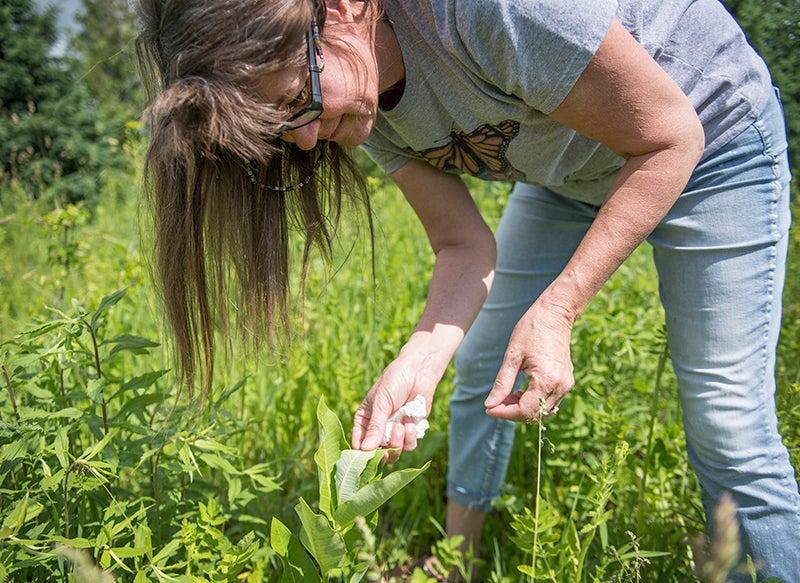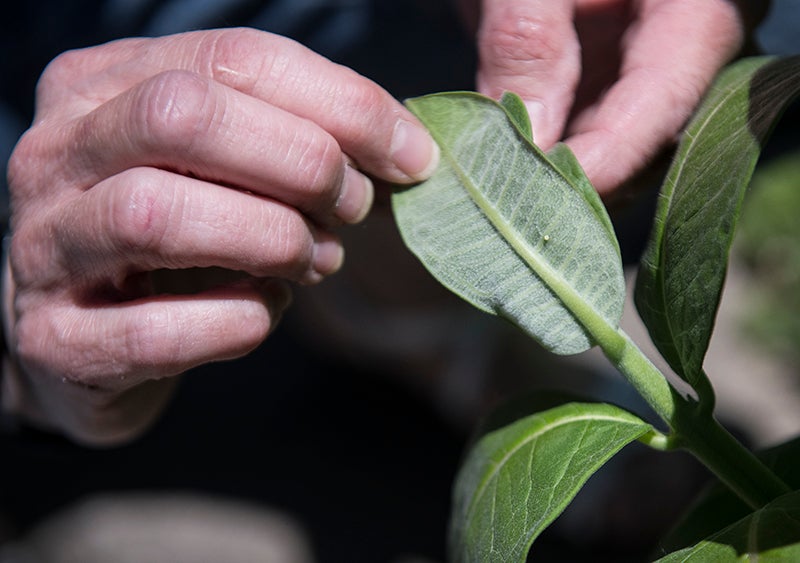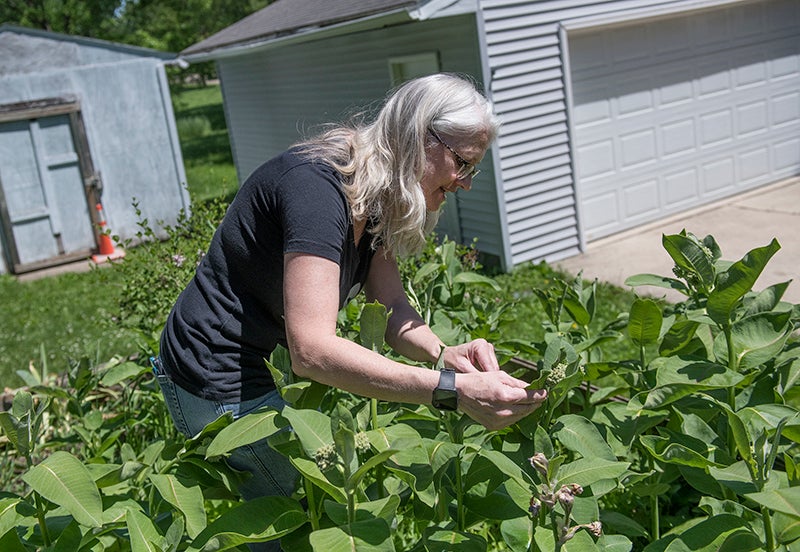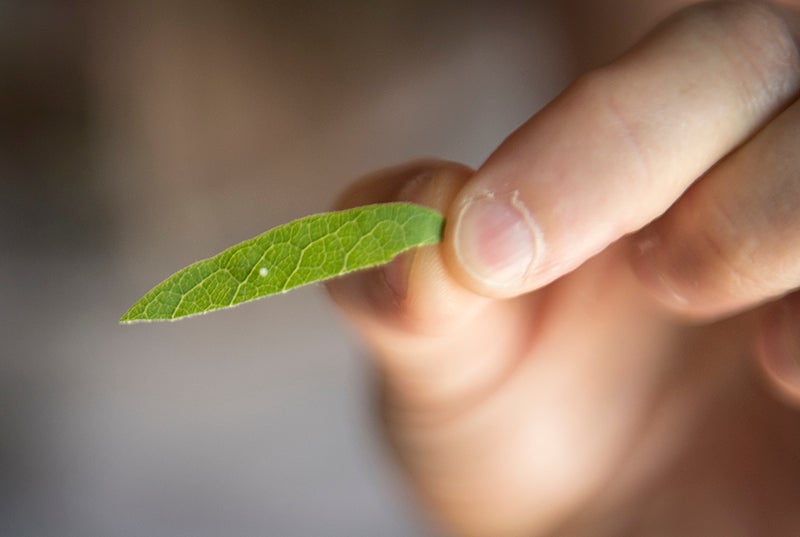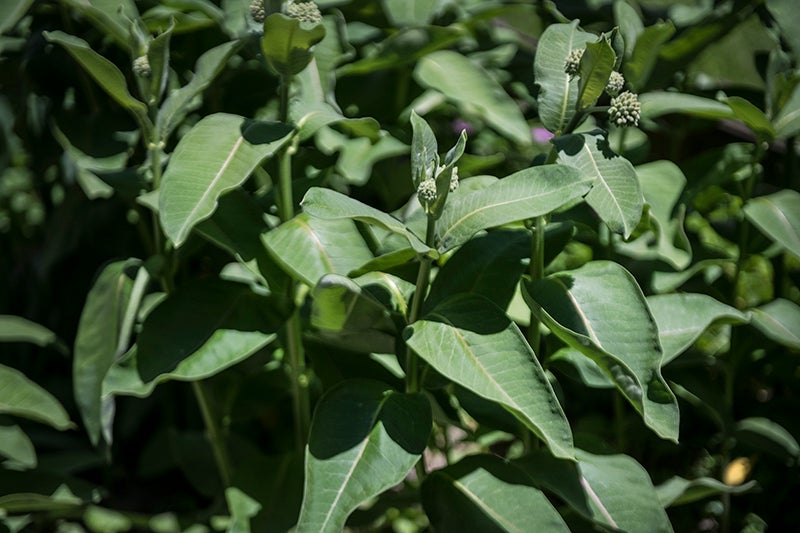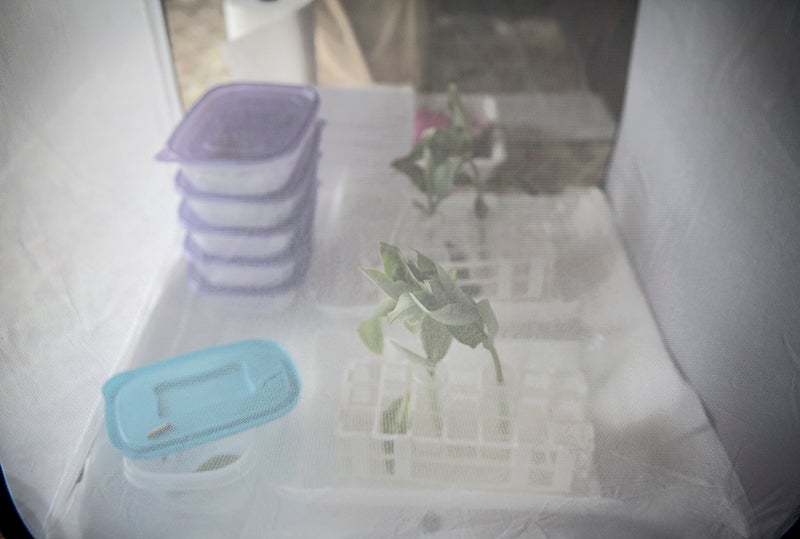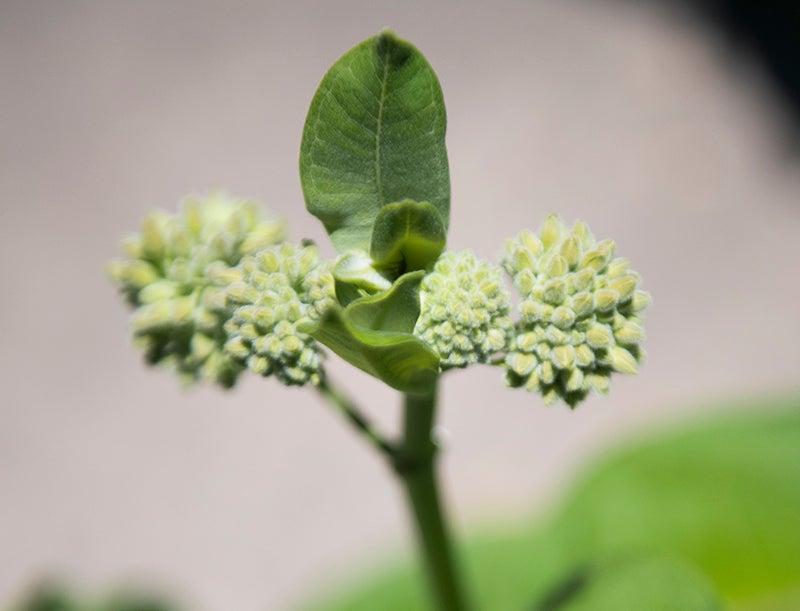The first signs of life
Published 8:22 pm Friday, June 14, 2019
Local women begin another year raising monarch butterflies
Editor’s note: This is the first in a four-part series. Pieces will be published on the third Saturday of each month.
On the north side of the wooden front steps to a home outside Hayward, an orange stake flag stands guard beneath a portly evergreen bush. The homeowner, Tammy Solomonson, put the flag up to protect something much less visible than the bright plastic warning: a single milkweed plant that reaches almost up to Solomonson’s knee — and is still growing.
She is protecting it from death by mower.
Behind the evergreen bush and through the screened windows lives the reason this milkweed is so diligently guarded. Outside, the wild. Inside, a controlled environment that, in the summer, is devoted solely to raising monarch butterflies.
Solomonson began raising monarchs about five years ago. She collects monarch eggs and caterpillars from the common milkweed that grows spottily around her acreage, brings them inside and hand-rears them through their milkweed binges, chrysalis formation and, eventually, release as butterflies.
“Every year, I always say I’m gonna do a few, and then every year I get it, I go grab ’em all,” Solomon said. “Pretty soon, it’s just out of control.”
Last year, she quit counting after she raised 150 caterpillars.
“It’d take me two hours to mow the lawn because … the milkweed patch in the back that I would mow around … I’d be like, ‘Oh, there’s one! Oh, there’s another!’ And then I’d spend a half hour in there just grabbing the rest of them.”
Eight miles away, Robin Hundley is doing close to the same thing.
Protectors of the milkweed
Hundley’s aunt started raising monarchs with her when Hundley was a child, she said. Hundley used to visit her aunt’s farm and day care.
“A farmer’s wife growing milkweed is a huge no-no in Iowa,” Hundley said.
Her aunt is the one who showed Hundley how to raise monarchs. Hundley did it with her own children right away when she had children. Now, those four children are between 22 and 30 years old, and two of them also raise monarchs.
Hundley’s milkweed patch lines the south side of the patio behind her house. The bed has some lilies and other flowers scattered within, Hundley said, but the dominating presence is the butterfly-beloved plant used for laying eggs and feeding caterpillars and butterflies.
“The milkweed just takes over, and I let it,” Hundley said.
Most of the time, the monarch will lay a single egg at a time on a milkweed leaf’s underside. They are the size of a pinhead and slightly opaque, beginning as a yellow-ish white orb until, just before it is ready to hatch, the small black dot of a caterpillar head will appear on top.
Hundley said she found the best way to protect the caterpillars from predators — wasps, flies, spiders, birds — is to collect them as eggs and bring them inside her house, where they live in plastic containers with punctured lids.
One year, Hundley discovered aphids munching on her milkweed. Pesticides would kill not only the aphids, but the monarch eggs and caterpillars.
“I came out with a bucket and I washed the leaves off with just a bucket of water, like soapy water,” Hundley said.
Standing in her own field of wildflowers north of the driveway, milkweed sprinkled throughout, Solomonson sounds incredulous.
“I don’t have that kind of patience,” she said.
But both women attribute that virtue to their husbands, whose mowing is disrupted by their protective instincts toward milkweed.
“Much to my husband’s dismay, if I find a patch that grows in the middle of the yard, I’ll mow around it,” Solomonson said.
Once the milkweed starts to come up along the edge of her long gravel drive, she stops mowing the edges until October.
The conversation’s twin is occurring at the Hundley household.
“‘Let me just check for eggs before you mow it,’” Hundley said.
A milkweed plant is growing up between the cracks in her back patio.
“‘Don’t cut this yet,’” she said she told her husband.
She is expecting guests.
“‘Honey, how much milkweed do you need?’” Hundley said her husband asked her. “And I’m like, ‘It’s a big crop.’”
She is referring to the monarch butterflies making their way up from Mexico in the largest numbers seen since 2007. Population estimates for the eastern North American monarch population (distinguished from the population in California, which does not migrate to Mexico) shows a 144% increase compared to last year’s numbers, as reported by the World Wildlife Federation-Mexico and the Comisión Nacional de Areas Naturales Protegidas.
Hundley is preparing for a bumper crop of butterflies.
Until they came, her sister, who lives in Iowa and also raises monarchs, taunted her with pictures of her own milkweed, Hundley said. She provides first sightings a week before the butterflies make it to Hundley’s own backyard a few hours north.
A summer-long hobby
Solomonson came over one day after one of Hundley’s caterpillars had escaped. Hundley was looking for it. She has found chrysalises in a few places, including hanging from the corner of her kitchen island counter. It was after learning about Hundley’s operation that Solomonson took it up for herself, Solomonson said.
“I’m crazy, but she’s obsessed,” Hundley said of Solomonson. “She is obsessed. She is really, like, she knows. She took this thing off and she just ran with it.”
Most of the eggs show up when the heat and humidity kicks in during July, Solomonson said. She collected her first eggs for the season June 2. She’ll collect as long as she can find them — all the way through to the end of September.
“We did it for fun,” Hundley said. “She’ll do hundreds.”
Both women frequently collect eggs multiple times a day. They gently flip the milkweed leaves over in a kind of treasure hunt, looking along the veins on its underside for small dots holding microscopic caterpillars inside.
“Every morning, it’s the first thing I think about when I wake up,” Solomonson said.
Chewed leaves are a clue that the caterpillars have already munched their way out of the egg. The women will carefully remove those leaves and take them inside to the awaiting plastic containers.
Solomonson said she likes to go out in the mornings as well as the late afternoon, when the sun is the warmest at its highest spot in the sky. If she gets 10 eggs when she goes out, she is happy, she said.
When Hundley reads in her lawn chair and sees a monarch, she will stop to watch. Monarchs that mate in the air have a peeping Tom: after the female breaks off, Hundley may stand and video her laying eggs on the milkweed. This way, she knows which plants to collect them from later.
‘You miss these things’
The orange flags multiplied to outline a roughly circular patch outside Solomonson’s back door. In it, a few of the distinctive plants with velvety undersides stand alert. The backyard patch of common milkweed is coming along nicely, Solomonson said. She is hoping still more developing plants break through the earth.
Inside, in her spiral-bound notebook, Solomonson keeps track of her progress. She said she doesn’t count eggs, because they may not hatch. Instead, she counts the caterpillars once they chew their way out. On Wednesday, Solomonson had 42 caterpillars in her care. As of Friday, the head-count was around 60.
Throughout the summer, Solomonson will be there to welcome them into the world, watching as they transform.
“That’s why I stare at them most of the day,” Solomonson said. “… You miss these things if you’re not staring at them.”


